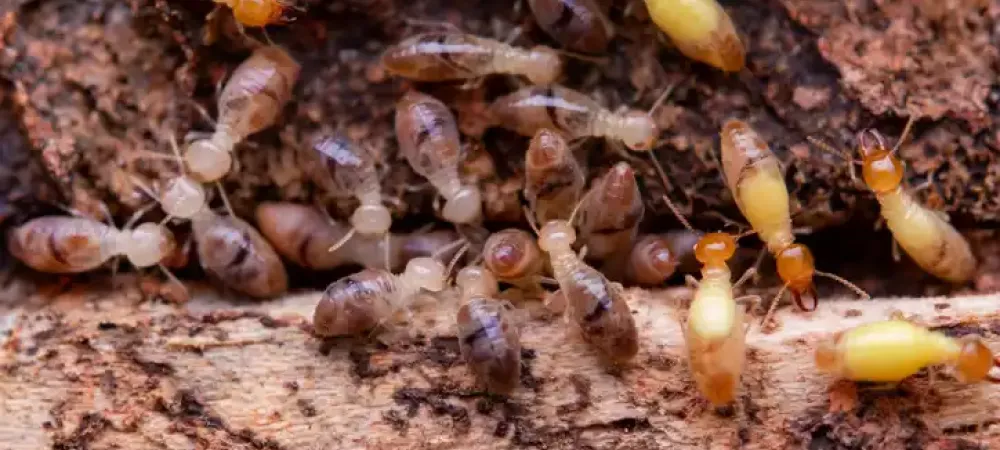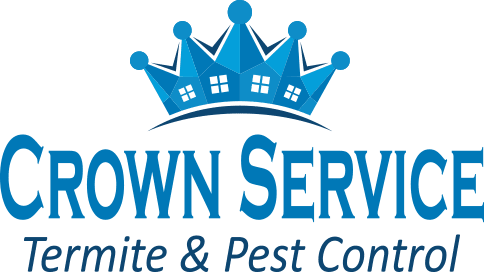Understanding Subterranean Termites in Huntsville

Subterranean termites are a significant threat to homes in Huntsville, capable of causing extensive and costly damage if left unchecked. These silent destroyers are often difficult to detect until they have already compromised the structural integrity of your property. This blog will provide a comprehensive overview of subterranean termites, their biology and behavior, signs of infestation, preventive measures, and effective treatment options.
Biology and Behavior
Colony Structure and Lifecycle
- Colony Composition: Subterranean termite colonies consist of a queen, king, workers, soldiers, and reproductive alates (swarmers). The queen and king are responsible for reproduction, workers build and maintain the nest, soldiers defend the colony, and alates establish new colonies.
- Lifecycle: The lifecycle begins with the queen laying eggs, which hatch into nymphs. Nymphs then develop into workers, soldiers, or alates depending on the colony's needs. The entire lifecycle can span several years, with queens capable of living up to 25 years and laying thousands of eggs annually.
- Nest Construction: Termites build extensive underground tunnel systems to access food sources. These tunnels can extend up to 150 feet from the colony, allowing termites to invade homes undetected.
Feeding Habits and Damage
- Diet: Subterranean termites feed on cellulose found in wood and other plant materials. They digest cellulose with the help of protozoa in their gut, breaking it down into simpler compounds they can absorb.
- Damage: Termites consume wood from the inside out, often leaving a thin veneer on the surface. This can lead to significant structural damage before the infestation is even noticed. Commonly affected areas include wooden beams, floors, walls, and furniture.
Signs of Infestation
- Mud Tubes: Termites construct mud tubes as protective pathways from their colony to food sources. These tubes are usually found on exterior walls, foundations, and in crawl spaces. Breaking open a mud tube and finding live termites is a clear indication of an active infestation.
- Discarded Wings: Reproductive alates swarm to establish new colonies, shedding their wings in the process. Finding discarded wings near windows, doors, or other entry points is a sign of termite activity.
- Hollow-sounding Wood: Tapping on wood that has been infested with termites may produce a hollow sound, indicating internal damage.
- Visible Damage: Termites often leave behind visible damage, such as blistered or darkened areas on wood, sagging floors, or damaged wood trim.
Preventive Measures
Reducing Moisture
- Proper Drainage: Ensure that the soil around your home's foundation slopes away to prevent water accumulation. Install gutters and downspouts to direct water away from the foundation.
- Repair Leaks: Fix any leaking pipes, faucets, and HVAC units promptly to reduce moisture levels in and around your home.
- Ventilation: Improve ventilation in crawl spaces and attics by installing vents or fans to reduce humidity levels.
Sealing Entry Points
- Caulking and Sealing: Seal cracks and crevices in your home's foundation, walls, and around windows and doors with caulk or other sealants to prevent termites from entering.
- Screening Vents: Install screens on exterior vents and around crawl space openings to keep termites out.
Proactive Inspections and Treatments
- Annual Inspections: Schedule regular inspections by a licensed pest control professional to detect early signs of termite activity.
- Baiting Systems: Consider installing termite baiting systems around your property to monitor and control termite populations.
Treatment Options
Baiting Systems
- How They Work: Bait stations containing slow-acting insecticides are placed around the perimeter of your home. Worker termites consume the bait and share it with the colony, eventually leading to the colony's collapse.
- Advantages: Baiting systems are effective at eliminating entire colonies and are less invasive than liquid treatments. They provide continuous monitoring and protection against future infestations.
Liquid Soil Treatments
- Application: Liquid termiticides are applied to the soil around your home's foundation, creating a barrier that kills termites on contact. This treatment can be applied during construction or as a remedial measure for existing structures.
- Efficacy: Liquid treatments provide immediate and long-lasting protection. However, they may require periodic reapplication to maintain effectiveness.
Wood Treatments
- Boric Acid: Boric acid can be applied to wooden structures to kill termites on contact. It acts as a stomach poison, disrupting the termite's digestive system.
- Advantages: Wood treatments are useful for treating localized infestations and can provide additional protection to vulnerable wooden structures.
Professional Pest Control
- Benefits: Professional pest control services offer expertise, advanced treatments, and comprehensive inspections that are often more effective than DIY methods. Professionals can customize treatment plans based on the severity and location of the infestation.
- Ongoing Maintenance: Regular follow-up treatments and inspections ensure long-term protection and early detection of any new infestations.
Understanding subterranean termites and their behavior is essential for protecting your home in Huntsville from these destructive pests. By recognizing the signs of infestation, implementing preventive measures, and considering professional treatment options, homeowners can effectively manage and prevent termite damage. Prioritize termite prevention and early detection to safeguard your property from these silent destroyers.

